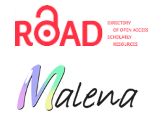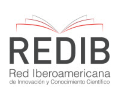Toward a Critical Teaching and Learning of National Languages and Cultures. Italian as a case study
Resumen
National identities exist. They change over time and are influenced by globalization, extensive migration, the Internet, and the constantly increasing speed of communication and transport, in the same way that a country's culture is influenced by new citizens who add their different national identities to the mix. At the same time, the identity of these new citizens is altered by the culture of the country they have moved to. By contrast, foreign language teaching varies little: If we consider the cultural topics selected by for teaching Italian as a foreign language, we can see how often they propagate an exotic, unrealistic image of bella Italia. As a consequence, students of Italian often have an out-of-date idea of contemporary Italy, especially with regard to its demographics and social dynamics. A wide variety of resources and methods is available to teachers who want to help their students understand this momentous change in Italian history, develop their intercultural communication skills and question both their own attitudes and the degree to which democratic values are being upheld by the culture they live in.Publicado
Cómo citar
Número
Sección
Licencia
CREATIVE COMMONS 4.0 Internacional
Los trabajos publicados en esta revista están bajo Licencia Creative Commons Atribución-NoComercial-CompartirIgual 4.0 Internacional.
Las obras publicadas bajo esta licencia pueden ser compartidas, copiadas y redistribuidas en cualquier medio o formato. Asimismo, se autoriza la adaptación, remezcla, transformación y creación. Tanto el compartir como el adaptar son posibles siempre y cuando se le otorgue el crédito a la obra de forma adecuada, proporcionando un enlace a la licencia e indicando si se han realizado cambios. Asimismo, no es posible realizar un uso comercial del material.






